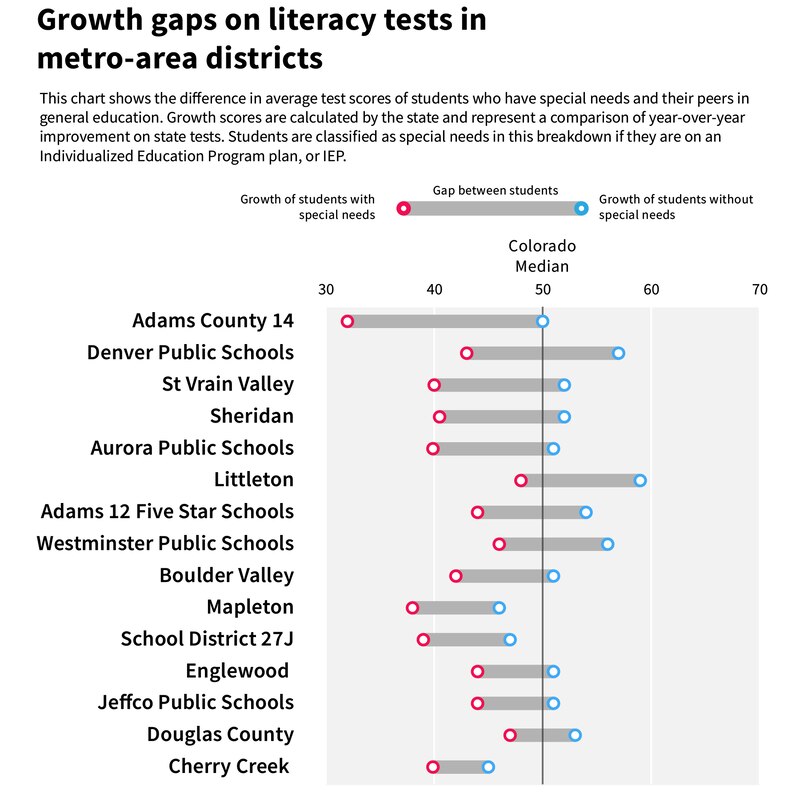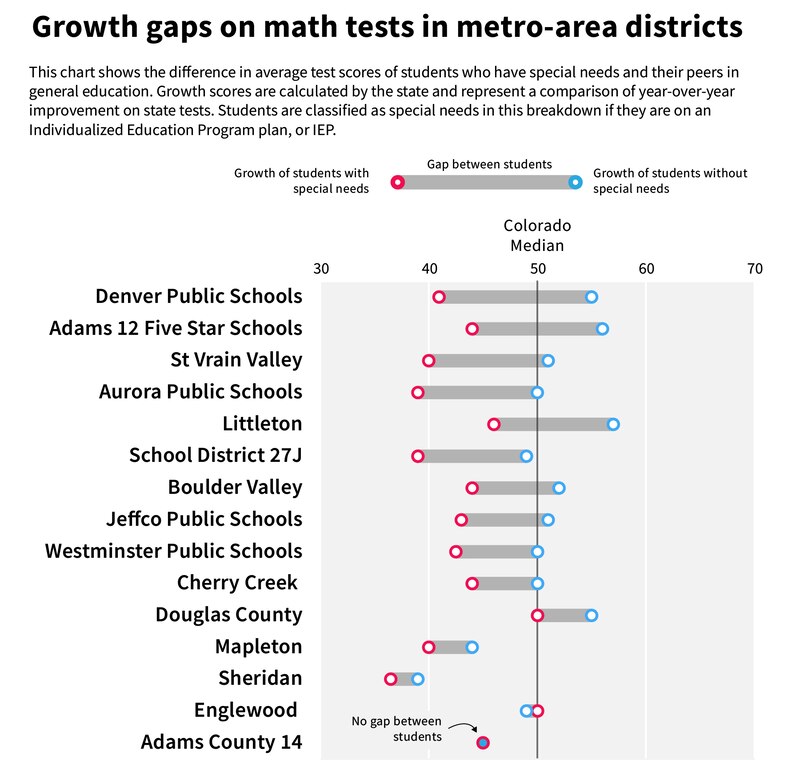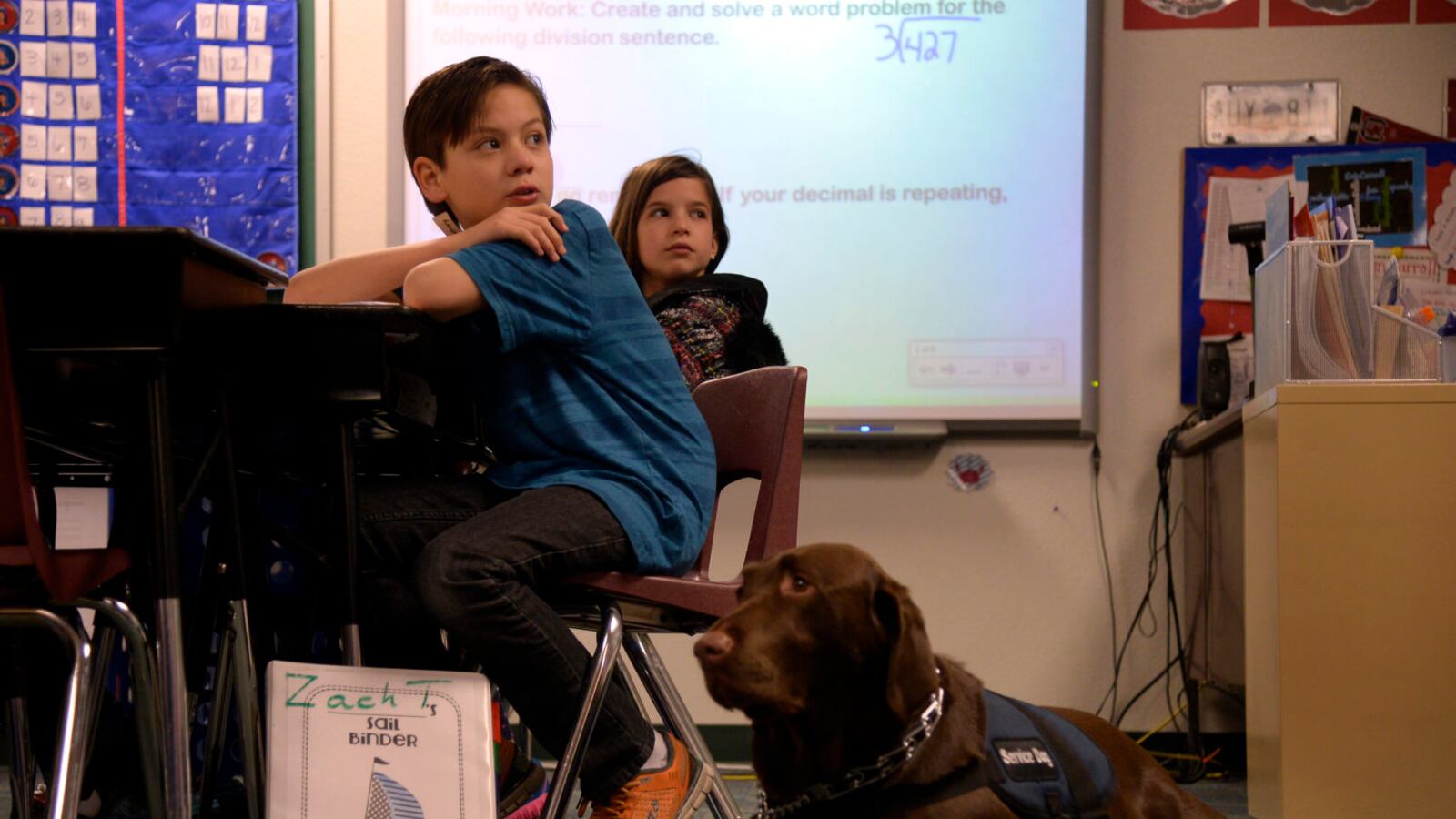Some of the largest gaps in test results in Colorado are between students who have special needs, and students who don’t.
Chalkbeat has been looking at data released earlier this month from state tests students took this spring.
Students with special needs historically underperform the general student population on state tests. However, advocates say that with the right help, students with non-cognitive disabilities should be just as likely to score as well as their peers.
The database below provides a breakdown of test data for students in third through eighth grade. The tool is an easy way for you to compare gaps among schools and the statewide average.
What you’ll see is a growth score — it’s a number calculated by the state that shows how students did year-over-year when compared only with students with similar academic histories. The scale is created to set the state median growth at about 50. If a school has a growth score of 55, for instance, that means the students in that school, on average, improved more than 55 percent of their academic peers.
The state has been weighing growth heavily when rating schools each year, but is now reconsidering that calculation.
Last year, looking at achievement data, Chalkbeat found some of the widest gaps in school districts such as Poudre, Boulder Valley and St. Vrain. But looking at the growth scores this year, the widest gaps in how much students improved from year to year are in Adams 14 and Denver.
Denver’s school district often has some of the state’s largest disparities when it comes to the education of different students. Adams 14, which actually had no gap when it came to the growth of students on math tests, but a very large gap in literacy, had a troubled year when it came to special education. The program director left in the spring, and several parents said they discovered late in the year that their children hadn’t received the help they should have according to their education plans.

Some districts remain unique cases. For instance, while the gap in Littleton is wide, its students with special needs had the highest growth in literacy among special needs students in other metro-area districts.
In Englewood, students who have an individualized education plan had, on average, higher growth in math than students who did not require such a plan.

Some school-level data is obscured by the state in a controversial attempt to protect student privacy. Below, if you see the “-” symbol, that means the score for that group of students at the school is not publicly available.
In the tool, “IEP” refers to the growth scores of students with Individualized Education Program plans required for students with special needs.
Look up your school here:

